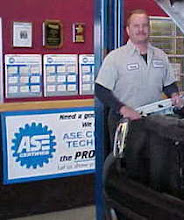Calculating fuel economy
A lot of people may know how to calculate fuel economy or have a built in average gas mileage meter in their vehicle. But just in case you need some tips on how to calculate fuel economy I have a short post to follow on the subject. If your goal is to increase your miles per gallon then accurate logs of gas mileage should be kept to gage progress.
Calculate fuel economy
When getting your base line measurement of fuel economy it is best to use the same gas station and fuel pump if possible. The first step is to fill your vehicle’s gas tank all the way, and write down the odometer mileage reading and clear your trip odometer if you have one. Special note to pump until the nozzle turns of automatically and do not attempt to top off or round up the numbers.
The next step is to drive the vehicle the way you would normally for a few days and then refill the tank as stated above and record the exact amount of gallons installed. Next you write the mileage down above the mileage that you originally recorded and subtract. This will give you the miles traveled and you can check this against your trip odometer.
The final step is to divide the number of miles you went by the number of gallons you just filled up with. This will give you a very accurate mpg figure. Basically the formula is number of miles driven divided by the number of gallons at second fill up. Personally I purchased the scan gage pictured to the left that plugs into your vehicles diagnostic connector and provides both instant and average fuel economy. This motivates me to keep my foot off the gas and shows me when my hypermiling is being effective instantly.
Why keep track of Miles Per Gallon
Now we are on the same page on how to calculate fuel economy. The next question is why we should always do this. The answer is it keeps us focused on saving fuel and driving accordingly. When you see your numbers go down you know you will have to be more conservative in your driving habits. Also if you try gas mileage enhancing products or techniques you can measure results.
This procedure was information I pulled from the 08 fuel saving guide. This package includes all of the popular stuff floating around the net about the gas saving subject. Among other things included are the plans to build the hydro star system or better known as water to gas. Another handy report included in the package was all about hybrid cars. This report compares prices and fuel economy as well as tax incentives that vary greatly from model to model. Learn more about hypermiling and the 08 gas saving guides content.







